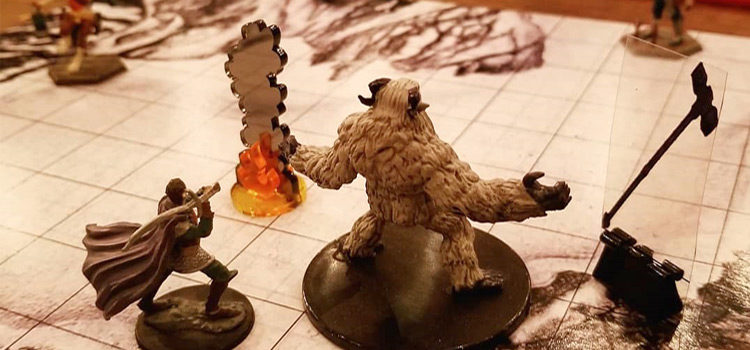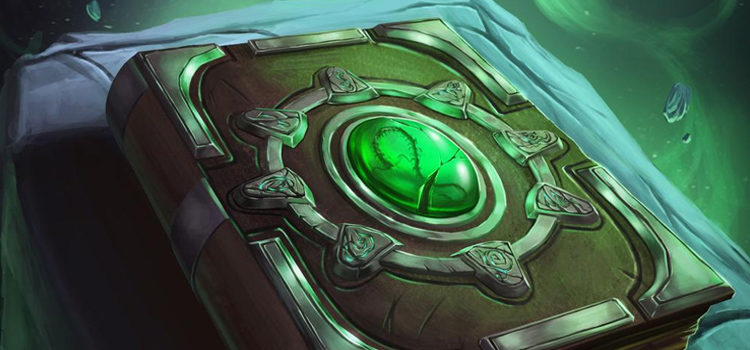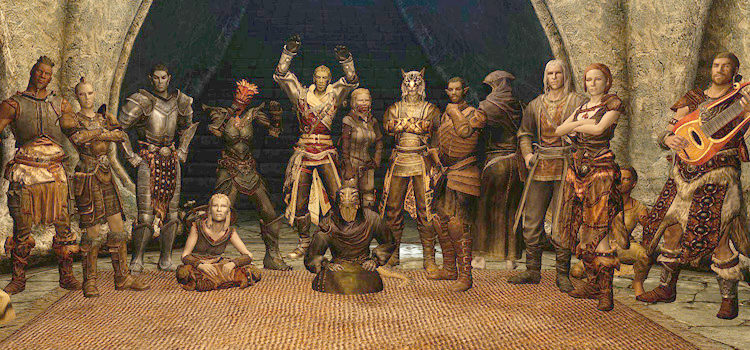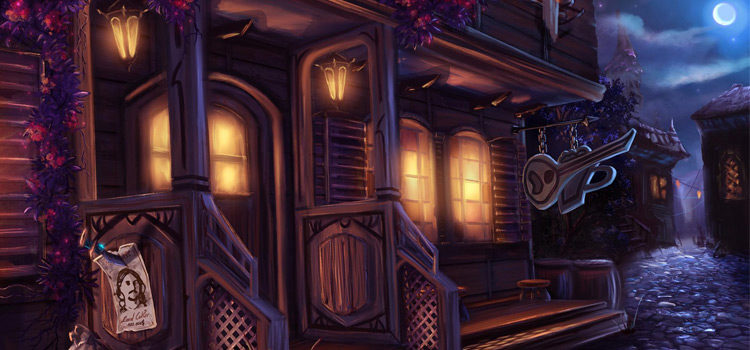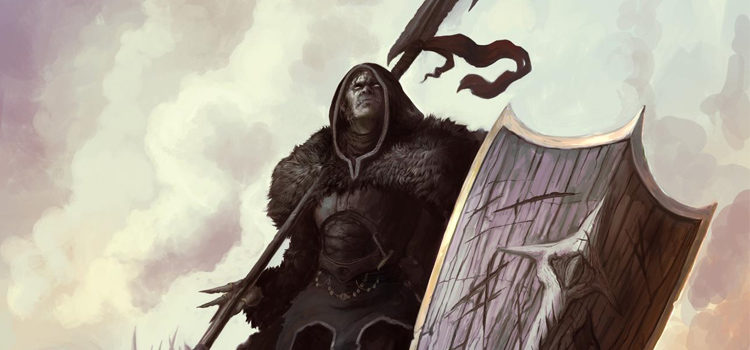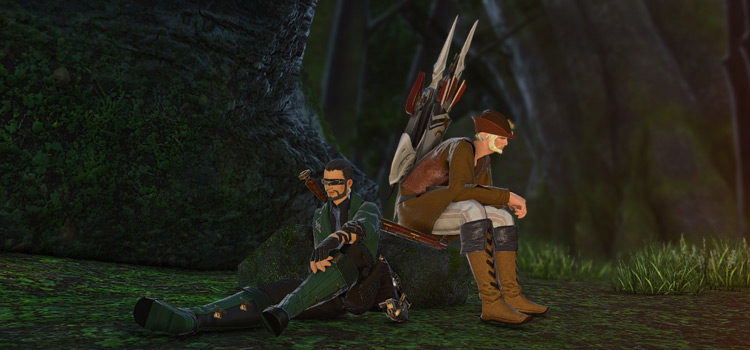20 Best Bard Spells For D&D 5th Edition
This post may contain affiliate links. If you buy something we may get a small commission at no extra cost to you. (Learn more).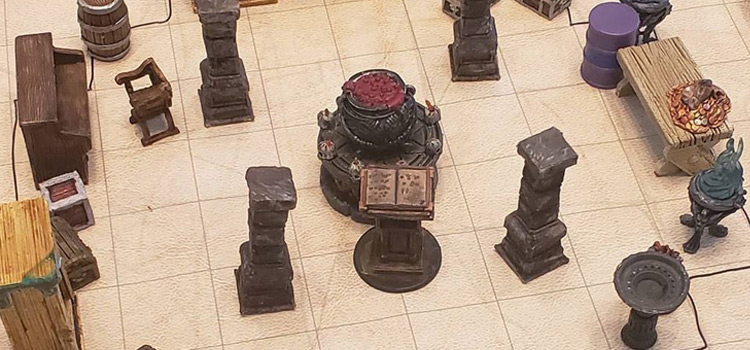
Some typical depictions of Bards portray them as charismatic performers who use their wit and charm to beguile and/or confuse those around them—sometimes with a smidge of magic in the mix.
In Dungeons & Dragons 5th Edition(D&D 5e) Bards have full spellcasting progression, meaning they eventually gain access to 9th-level spells—the highest tier of magic.
The Bard’s spellcasting list contains mostly support and control spells which allow them to buff/heal allies, disable foes, and otherwise address numerous situations both in- and out-of-combat.
Unlike Clerics, Druids, and Wizards who prepare their spells, Bards have a limited number of spells chosen from their class’s spellcasting list. So players must consider their spell choices carefully, as they usually have limited opportunities to learn new spells or switch their selections.
I’ve played a several Bards in multiple campaigns and I found that emphasizing utility and support spells with smatterings of damage worked best for me. With that in mind, here’s my list for the best spell picks!*
*NOTE: For this list I’ll focus only on 1st-level spells or higher, so no cantrip choices here.
20. Psychic Scream
Source: Xanathar’s Guide to Everything
In D&D, 9th-level level spells are among the most powerful tools which full spellcasting classes like the Bard can unlock.
I think it’s worth mentioning a few, though the time and effort it takes to get to 9th-level spells (17 levels in the class at the earliest) affect their usability for most Bards, and therefore affects their overall rankings on this list.
Psychic scream deals psychic damage and potentially stuns up to 10 creatures of your choice within a 90-foot range; plus most creatures lack formidable Intelligence saves, making them more likely to fail the save against these effects.
Overall a spell of this caliber can end a battle before it even begins.
19. Enemies Abound
Source: Xanathar’s Guide to Everything
A control option for Bards, enemies abound can make a single creature into a wild card during combat for a limited time.
The target can’t distinguish between their allies and enemies, so they have to randomize who to target with their attacks or abilities.
Depending on the number of enemies on the field, this spell might temporarily give your side the numbers advantage.
Due to enemies abound requiring the less common Intelligence saving throw, this spell is more likely to take effect so long as you continue to concentrate on it (since spellcasters can only have one concentration spell going at a time).
18. Teleport
Source: Player’s Handbook
A 7th-level spell, teleport does exactly as it sounds.
It allows a Bard to instantly transport themselves and up to eight willing targets (including objects) to any destination on the same plane of existence.
Now you might risk some margin of error, depending on your Bard’s familiarity with the destination.
But overall instantaneous group teleportation is a great tool to have, as you can significantly cut down travel times or just teleport your group out of a bad situation.
17. Synaptic Static
Source: Xanathar’s Guide to Everything
For a while, the Bard’s spell list lacked a good higher-level damaging option.
However the addition of synaptic static remedied this issue.
With a 5th-level slot or higher, the Bard unleashes an explosion of psychic energy, dealing psychic damage to each creature within 20-feet of a designated point.
Additionally, targets who fail the Intelligence save against synaptic static suffer a debuff that subtracts a d6 from all their attack rolls, ability checks, and Constitution saving throws for a minute or until they successfully save against the effect (whichever comes first).
16. Tasha’s Hideous Laughter
Source: Player’s Handbook
As a 1st-level spell, Tasha’s hideous laughter is the Bard’s earliest option to completely disable an opponent.
Laughter overtakes a target that fails the Wisdom saving throw against this spell; the target falls prone and becomes incapacitated, meaning they can’t take any actions or stand up.
While the target does get to save against the spell’s effect in later turns, or when they take damage, Tasha’s hideous laughter can still take them out of a fight long enough to give you an upper hand.
15. Sending
Source: Player’s Handbook
Bards who abide by the adage of “communication is key” should consider picking up the sending spell.
This 3rd-level option allows Bards to relay a 25-word message to anyone they’re “familiar” with, and the target can also reply with their own 25-word message.
There’s no geographic limit to how far your message can travel, though sending works best when you and your target are on the same plane of existence.
This spell can prove extremely useful for maintaining communication between your allies, no matter the distance.
14. Foresight
Source: Player’s Handbook
Another 9th-level spell, foresight is arguably the most potent buff that Bards can cast.
Foresight gives the target advantage (meaning they roll a d20 twice and take the better result) on attack rolls, ability checks, and saving throws.
The spell also renders a target incapable of being surprised and grants disadvantage on attacks against them. Plus, the spell’s effects last for 8 whole hours with no concentration required.
If your Bard really wants to bolster an ally—or themself—you can’t go wrong with foresight.
13. Otto’s Irresistible Dance
Source: Player’s Handbook
This 6th-level spell compels a creature to dance in place!
If that isn’t a Bard move, then nothing is.
When affected by this spell, the target must use all its movement just to dance; it also has disadvantage on attack rolls and Dexterity saves, and attack rolls against it have advantage.
Once the Bard casts Otto’s irresistible dance, it immediately takes effect.
In order to shake off the spell the target must spend their action to attempt to succeed on a Wisdom save.
At the very least, the spell forces a creature to dedicate at least one action (if not multiple upon a failure) or suffer from the negative effects for the duration.
12. Dissonant Whispers
Source: Player’s Handbook
Dissonant whispers is a 1st-level spell available almost exclusively to Bards.
While this offensive option deals a respectable 3d6 psychic damage at its lowest level, the spell’s real potency lies in forcing the target to spend its reaction to move away from you on a failed save.
This movement does provoke attacks of opportunity which can lead to a lot of potential damage when capitalized by your allies!
11. Hold Monster/Hold Person
Source: Player’s Handbook
While Bards don’t have a great deal of damaging options, they do have access to many spells that can empower their allies or prevent their enemies from doing any harm.
Hold monster, a 5th-level spell, accomplishes both by potentially paralyzing any (non-undead) creature and causing all attacks against it to critically hit, given the creature has no immunities to the paralyzed condition.
The 2nd-level spell, hold person, functions much like its higher-level version, albeit it can only target humanoid creatures.
10. True Polymorph
Source: Player’s Handbook
This 9th-level spell kicks off the top ten with gusto.
Like its potent 4th-level spell version (which we’ll cover later), true polymorph gives you the power of transformation at your fingertips.
True polymorph can turn any creature or object into another creature or object, making it an indisputable upgrade.
This spell would rank much higher, but like other 9th-level spells, it’s not a very helpful choice when most players may not even reach 17th level or higher as a Bard.
Once you do get it, true polymorph will likely solve any problem your Bard encounters by drawing on just the right transformation.
9. Suggestion/Mass Suggestion
Source: Player’s Handbook
Sometimes the best spells don’t need a flashy effect.
Suggestion is a 2nd-level spell that charms a target to pursue a certain course of action to the best of their ability; it also has a 6th-level spell version, mass suggestion, which affects even more creatures for a longer period of time without using up a caster’s concentration.
The applications for these spells depend on the situation at hand, as they can be used to gather information, neutralize enemy threats, and more.
However for all their potential, suggestion and mass suggestion relies on your DM’s interpretation on how the targets pursue the given course of action.
8. Forcecage
Source: Player’s Handbook
A fantastic 7th-level spell, forcecage creates an invisible prison of magical force that takes the form of either a cage or a box.
While most spells require some saving throw to avoid its effect, a Bard can easily trap a creature so long as their target(s) fit within the prison’s dimensions.
Spells cannot pass into or out of the area. And if you choose to create a box, then other attacks or abilities will likely be blocked too.
Forcecage lasts for an hour without requiring concentration, so the only way a creature can escape would be through teleportation. Though even that option has a chance for failure.
7. Faerie Fire
Source: Player’s Handbook
With a 1st-level spell called faerie fire, Bards can enable their allies to land their attacks, or even critically hit.
Targets who fail their Dexterity save against faerie fire are covered in a colorful light that grants advantage to all attack rolls against it, and affected creatures can’t benefit from invisibility either.
The effect lasts as long as your Bard maintains concentration.
6. Dimension Door
Source: Player’s Handbook
A 4th-level spell, dimension door gives Bards their first major teleportation ability with a range of up to 500 feet.
For many situations that require you to escape, infiltrate, or reposition, this spell should be your choice to do so (and quickly).
To make this spell even better, you can even take another creature with you. So long as they’re in the same size category or smaller.
5. Hypnotic Pattern
Source: Player’s Handbook
Hypnotic pattern creates a brief pattern of colors that can distract targets.
This 3rd-level spell inflicts the charmed condition in a 30-foot cube to targets who fail its Wisdom save.
The spell renders afflicted targets incapacitated and reduces their speed to 0 while affected by the spell.
Once a target has failed their save they’re incapacitated until they take damage, or another creature rouses them with an action.
Hypnotic pattern is a great option for Bards who want to control the number of threats on the battlefield.
4. Dominate Monster/Dominate Person
Source: Player’s Handbook
Both dominate monster (8th-level spell) and dominate person (5th-level spell) are charm spells that allow your Bard to dictate, if not outright control, the actions of another creature.
Dominate monster, the objectively better version of the spell, allows you to target any creature not immune to charm; dominate person functions similarly, targeting only humanoid-type creatures.
Once a target fails their save they remain under your control for the duration of the spell (so long as you maintain concentration), though they can save against the spell each time they take damage.
3. Healing Word
Source: Player’s Handbook
Healing in 5e is pretty simplified, as characters only need slivers of HP to remain combat ready.
However your allies will inevitably need a mid-combat pick-me-up during your adventuring careers, and healing word gives Bards an efficient spell to do just that.
Requiring only a bonus action, this 1st-level spell allows you to heal your allies for a small amount.
Which usually suffices to stop them from bleeding out.
The great value here lies in leaving your action for non-spell options or cantrips.
2. Invisibility/Greater Invisibility
Source: Player’s Handbook
Sometimes the most threatening enemies are the ones you can’t see.
Invisibility (2nd-level spell) allows your Bard to turn a target invisible for one hour, an effect that stays so long as you maintain concentration and the target refrains from attacking or casting a spell.
Being invisible opens up many opportunities for scouting, infiltration, escaping, and other shenanigans that require discretion.
Another version, greater invisibility, is a 4th-level spell that allows a target to stay invisible even after attacking or casting spells, making it a great combat buff albeit for a significantly shorter duration.
1. Polymorph
Source: Player’s Handbook
While I covered polymorph’s more powerful version earlier, I believe this spell is so versatile that it warrants its own spot at the top.
And Bards can access it with only seven levels in the class since it’s only a 4th-level spell.
Considering you can know only a limited number of spells to cast, polymorph is a multi-purpose spell that allows you to transform the target into a beast with a challenge rating equal to or less than its own (or character levels if it doesn’t have one).
Since 5e has a large repository of beasts, polymorph can give your Bard a handy tool for transportation, combat, utility, and more.
Simply turn someone into a creature suitable for the task at hand—like a giant eagle to fly or a killer whale to swim through the ocean!
Or turn your enemy into something harmless, like a turtle.
Polymorph is an extremely flexible spell that will prove useful for the duration of your adventuring career!
